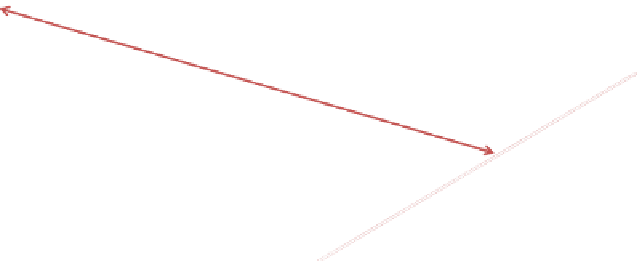Geography Reference
In-Depth Information
6 m
5,5 m
15 m
2,5
Fig. 5.29 The small and very small crops fields on the Euphrates River banks near Deir Azzour
in July 2009
spectral separability measurements (Jeffries-Matusita and Transformed Diver-
gence) to determine how the used remotely sensed data would be able to distin-
guish the interested classes (spectrally) on average. According to PCI (
2001
) and
Richards and Jia, (
2003
), measurements \1,000 = very bad spectral separability;
1,000 \ measurements \ 1,900 = limited separability; and measurements
[1,900 = very good spectral separability. The majority of the training sites sat-
isfied the last consideration; and (2) satellite image based approach: this approach
in gathering the training sites was based on visual interpretation, using the back-
ground of the interpreter about the study area. This approach was used only for
gathering the representative training sites for the five general LULC-classes. It was
also possible to select the training samples for the agricultural class (trees, espe-
cially Poplar) from Google Earth visually by shadows that appear clearly. This
method was used to confirm the measurements/or choice based on the statistical
records for the year 1987, (see
Sect. 5.10
) for the training sites of some crops.
Other remotely sensed images were only used visually without processing. For this
purpose, if some fields appear black/burned on an image recorded in August for
example, this would indicate it was a wheat field. Sugar beet appeared on the July
images as green in contrast to wheat, which once harvested, appeared as burned/
black, straw/yellow, or tillaged/light- or dark- brown. Table
5.3
gives an overview
about the used training samples in the supervised classification.












Search WWH ::

Custom Search